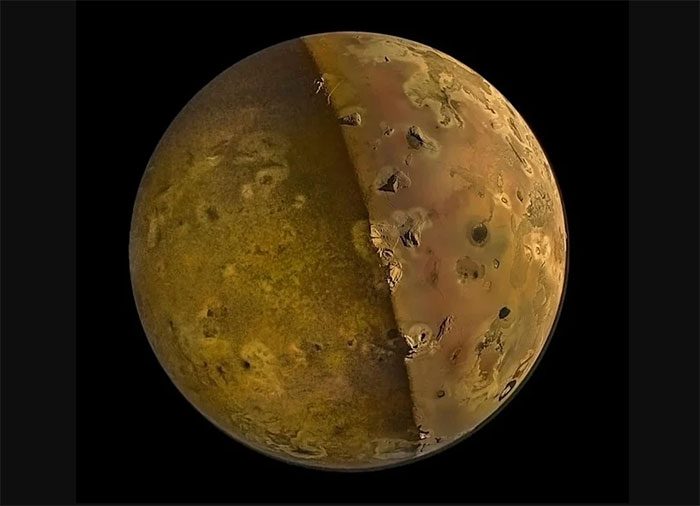NASA’s Juno spacecraft has recently conducted a close flyby of Jupiter’s moon Io, marking the closest approach by a spacecraft to this Earth-like planet’s moon in over two decades, according to SciTechDaily on February 11.

Jupiter’s moon Io in the latest image. (Photo: NASA/JPL-CALTECH).
Specifically, on December 30, 2023, Juno passed just 1,500 kilometers above the surface of Io, the most volcanically active body in the solar system.
On February 3, Juno again approached Jupiter’s moon, this time flying primarily over the southern hemisphere, while the previous flyby focused on the northern hemisphere.
During these two recent flybys, Juno has captured images with its JunoCam instrument showing plumes of smoke, towering mountains, and lava lakes with several islands on the surface of Io.
NASA is calling for citizen scientists to assist in analyzing and interpreting these new images of the volcanic world.
The Juno mission, which NASA launched on August 5, 2011, is a space exploration project primarily focused on Jupiter, the largest planet in the solar system, and some of its moons.
Io is one of Jupiter’s largest moons and the fourth largest in the entire Solar System. Io is notorious for its intense volcanic activity, making it the celestial body with the most vigorous volcanic activities in the solar system.
Discovered by Galileo Galilei in 1610, Io plays a crucial role in humanity’s efforts to understand volcanic processes on other worlds.
The surface of Io is covered with hundreds of volcanoes, some of which erupt plumes of sulfur and sulfur dioxide reaching heights of up to 500 kilometers.





















































